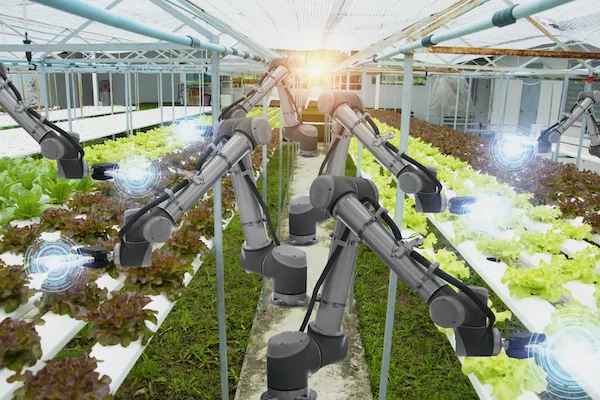This week’s PMA Virtual Town Hall focused on technology. What technological advances are gaining importance, and have aided companies throughout the supply chain amidst the chaos of the pandemic? The three most important technologies under discussion were those of crop forecasting, transportation management systems, and robotics.

Crop forecasting: beneficial for producers and retailers
With technology advancing quickly throughout the world, there is forecasting technology available that is able to forecast a crop size with 90% accuracy, four to six weeks ahead of harvest. The main benefit of this technology is that it allows the producers to prepare for possible gaps in the supply chain, or, on the other side, find outlets for surplus volumes. An accurate forecast helps increase profits because the producers don’t have to worry about surplus volumes or shortages.
For retailers, knowing the volumes that will be expected with accuracy allows them to plan for their promotions and adjust their pricing accordingly. With the pandemic, a tool like this was especially beneficial because there was a lot of volatility in markets everywhere.
Transportation management systems increase flexibility
Transportation management systems have been around for years, but they have only recently become more adapted to the fresh produce industry. Transportation needs to be managed quite differently depending on what type of product is being transported. One of the panelists shared that for dry freight loads, there’s only an average of one change per load, but for produce this average is often higher than six. So, the transport management systems that are designed for the fresh produce industry need to be much more flexible and adaptable than those used for other types of products.
Throughout the pandemic, the benefit of having a transportation management system has been clear. These systems allow companies to react much more quickly to changes within the supply chain, but it will also provide a lot of valuable information that helps a company be as efficient as possible. This is information such as what was paid on transport per pallet, or per box, this year compared with last year. It also compares these data points to those of the rest of the industry to see where it falls on the spectrum, and how efficiency can be optimized.
One thing that the pandemic has shown us is that the markets can be very unpredictable, and that consumer demand can shift from one day to the next. Transportation management systems help companies navigate this unfamiliar terrain and help them make the necessary adjustments.
Robotics in harvesting
Another challenge that many producers faced throughout the pandemic was that of labor shortages. This has made it clear to many that if certain aspects of the process can be automated, then this is definitely desirable. One of the things robots can be used for is to scout the crops. They can scan for things like plant disease, for example. These robots reduce the need for people to walk through the fields or greenhouses and can provide better coverage of the area.
One of the most anticipated developments is that of robotic harvesting. These robots have been under construction and are being trialed. One of the panelists explains that the goal is for the robot to achieve parity with humans and be able to harvest the product at the same rates as human laborers would. The robot will likely be able to attain more accuracy, with regard to picking the product at the right maturity levels. The possibility for human error is taken out of the equation.
One of the biggest benefits of the robotic harvest is that the robot can run 24 hours a day and continue to harvest at night. Picking at nighttime might also be better for the crop – for strawberries, for example, bruising is less likely when they are picked at cooler temperatures. This will also increase the product’s shelf-life and optimize the utilization of commercial coolers because the fruit isn’t being brought in at warm temperatures. The journey into robotics is a few years underway, but the industry and the world is still at the beginning – much more innovation will happen in the years to come.
Next week’s PMA Virtual Town Hall will focus on food waste reduction.
